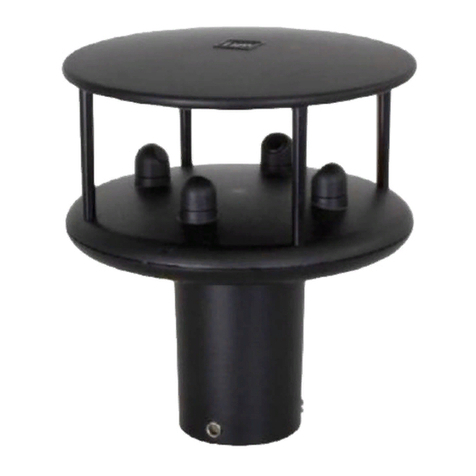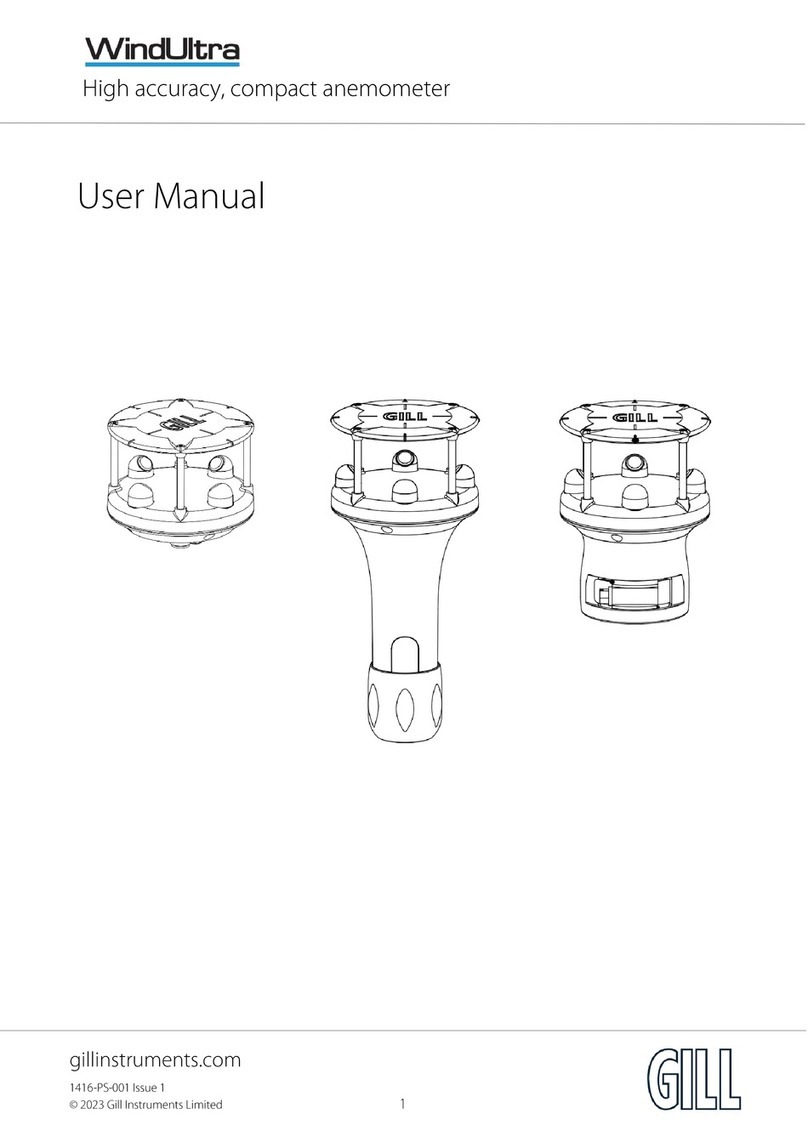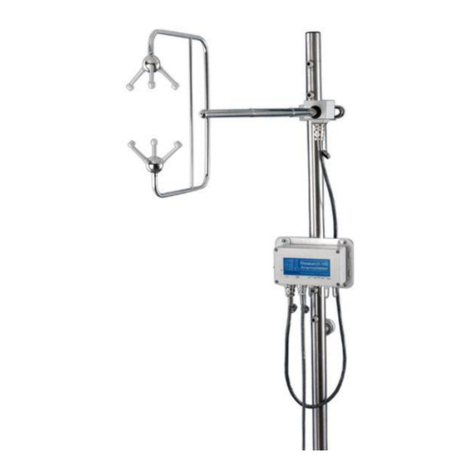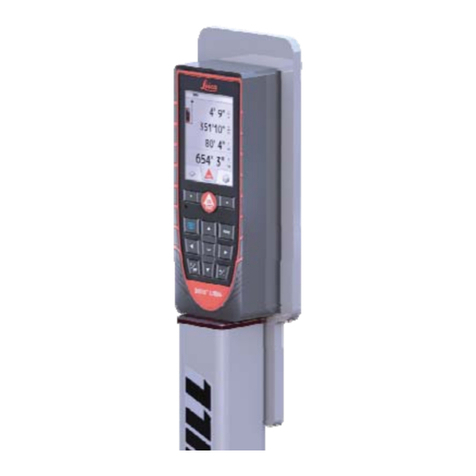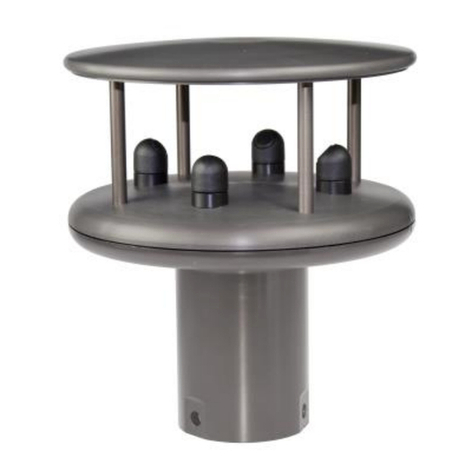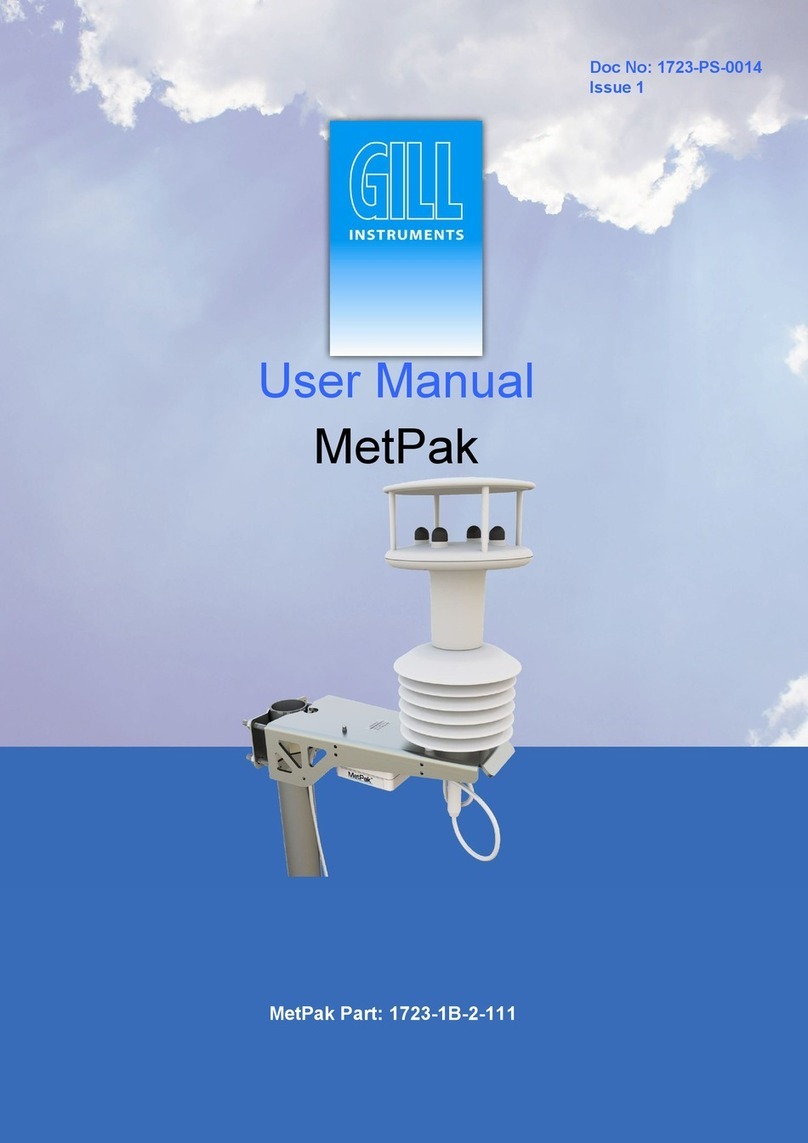WindMaster and WindMaster Pro 1561-PS-0001. Issue 3 March 2007
________________________________________________________________________________________________________________________
8
4. SPECIFICATION
WindMaster WindMaster Pro
Outputs
Output rate 1, 2, 4, 8, 10, 16, 20, (32 option) Hz 1, 2, 4, 8, 10, 16, 20, 32 Hz
Sample rate (automatically selected) 32 or 40 Hz 32 or 40 Hz
Units of measure m/s, mph, KPH, knots, ft/min m/s, mph, KPH, knots, ft/min
Format UVW or Polar UVW or Polar
Averaging Flexible 0 - 3600 s Flexible 0 - 3600 s
Wind Speed
Range 0 - 45 m/s 0 - 65 m/s
Resolution 0.01 or 0.001 m/s 0.01 or 0.001 m/s
Accuracy (12 m/s) (Standard)* < 1.5% RMS < 1.5% RMS
Accuracy (12 m/s) (to special order)* # < 1.0 % RMS < 1.0 % RMS
Direction
Range 0 – 359.9°0 – 359.9°
Resolution 10 or 0.1010 or 0.10
Accuracy (12 m/s) (Standard)* 2°2°
Accuracy (12 m/s) (to special order)* # 0.5°0.5°
Speed of Sound
Range 300 -370 m/s 300 -370 m/s
Resolution 0.01 m/s 0.01 m/s
Accuracy < ±0.5% @ 20°C < ±0.5% @ 20 °C
Power requirement 9 -30 V dc, (55 mA @ 12 V dc)
(excluding analogue outputs)
9 -30 V dc, (55 mA @ 12 V dc)
(excluding analogue outputs)
Digital output
Protocol
(ASCII and Binary)
RS232, RS422, RS485
network up to 8 anemometers
RS232, RS422, RS485
network up to 8 anemometers
Baud rates 2400 - 57600 2400 - 57600
Analogue outputs (optional)
4 channels Resolution 12 or 14 bit Resolution 14 bit
Selectable range User selectable full scale wind speed User selectable full scale wind speed
Output type 0-20 mA, 4-20 mA, 0-5V, ±5V, ±2.5V 0-20 mA, 4-20 mA, 0-5V, ±5V, ±2.5V
Analogue inputs (optional)
Up to 4 single-ended
or 2 differential
Resolution 12 or 14 bit Resolution 14 bit,
plus PRT 100ohm (option)
Input range ±5 V ±5 V
Sonic temperature
Range -40 °C to +70 °C -40 °C to +70 °C
PRT
Resolution Not Applicable 0.01°C
Measurement Accuracy Not Applicable <±0.1 °C (-40 to +50°C)
Measurement Accuracy Not Applicable <±0.15°C (+50 to +70°C
General
Weight 1.0 kg 1.7 kg
Size 750 mm x 240 mm 750 mm x 240 mm
Environmental IP65 IP65
Operating temperature -40 °C to +70 °C -40 °C to +70 °C
Humidity < 5 % to 100 % < 5 % to 100 %
Precipitation Operation up to 300 mm / hour Operation up to 300 mm / hour
EMC Emissions BS EN 61000 - 6 - 3
Immunity BS EN 61000 - 6 - 2
Emissions BS EN 61000 - 6 - 3
Immunity BS EN 61000 - 6 - 2
* Accuracy specification applies for wind speed up to range maximum, and for wind incidence up to ±30 °from the horizontal.
# Custom calibration (to be specified when ordering, or unit can be returned for calibration) - Wind tunnel calibration is in
accordance with ISO 16622 and traceable to national standards.

